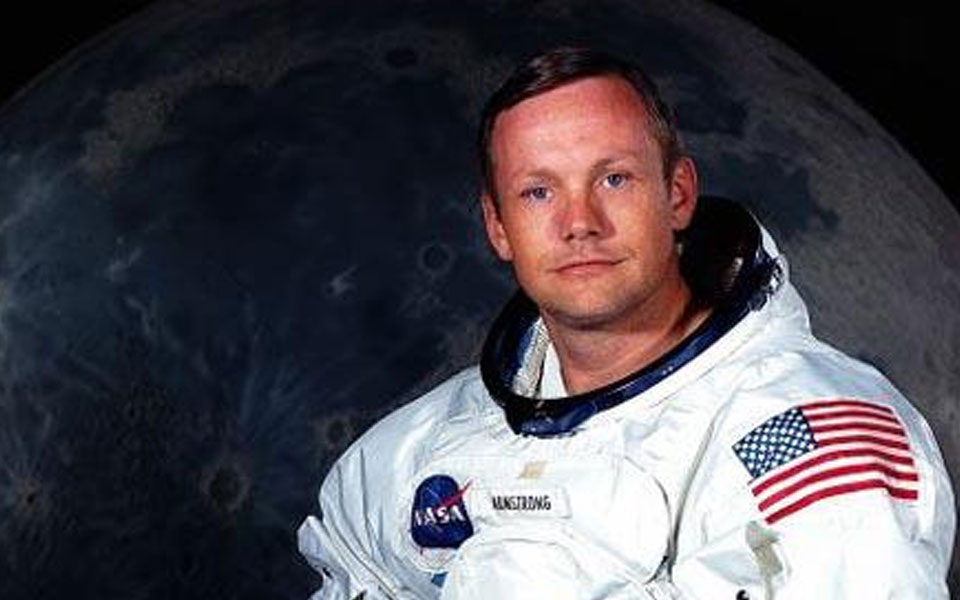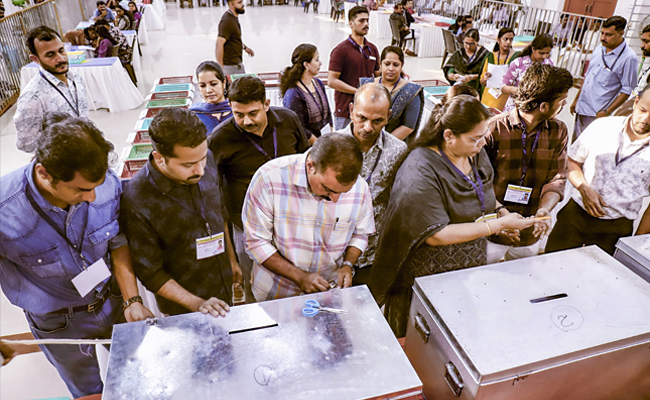Washington, July 21 : The personal collection of US astronaut Neil Armstrong, the first man to set foot on the Moon 49 years ago on July 20, will be auctioned by his family.
Containing over 2,000 items, the collection will go on sale in a series of three auctions with the first in November 2018 and other two in May and November 2019, Efe news quoted Dallas-based Heritage Auctions.
Among the items being offered are Robbins medallions flown on the Apollo 11 mission, including an "extremely rare gold example".
A Purdue University -- Armstrong's alma mater -- Centennial 1869-1969 silk flag carried by him to the Moon, pieces of a wing and propeller from the Wright Brothers Flyer which he took with him on Apollo 11, as well as a gold pin from Gemini 8 -- Armstrong's first spaceflight -- and his Boy Scouts Cap.
Correspondence, including a NASA document "Underscoring the planning behind the landmark event", will also be on sale.
"There will be flown items, autographed items and items of historical significance. There will be items that make you think, items that make you laugh and items that make you scratch your head," the astronaut's son Mark Armstrong said.
Armstrong, who passed away in 2012 aged 82 years, made history as the first man to walk on the Moon on July 20, 1969.
He is also remembered for the words he uttered in that moment: "That's one small step for man, one giant leap for mankind".
Let the Truth be known. If you read VB and like VB, please be a VB Supporter and Help us deliver the Truth to one and all.
Prayagraj (PTI): The Allahabad High Court has set aside a lower court order mandating a man to pay maintenance to his estranged wife, observing that she earns her living and did not reveal the true salary in her affidavit.
Justice Madan Pal Singh also allowed a criminal revision petition filed by the man, Ankit Saha.
"A perusal of the impugned judgment indicates that in the affidavit filed before the trial court, the opposite party herself admitted that she is a post-graduate and a web designer by qualification. She is working as a senior sales coordinator in a company and getting a salary of Rs 34,000 per month," the court said in the December 3 order.
"But in her cross-examination, she has admitted that she was earning Rs 36,000 per month. Such an amount for a wife who has no other liability cannot be said to be meagre; whereas the man has the responsibility of maintaining his aged parents and other social obligations," it observed.
The high court observed that the woman was not entitled to get any maintenance from her husband "as she is an earning lady and able to maintain herself".
The man's counsel argued in court that the estranged wife did not reveal the whole truth in the affidavit.
"She claimed herself to be an illiterate and unemployed woman. When the document filed by the man was shown to her before the trial court, she admitted her income during cross-examination. Thus, it is clear that she did not come before the trial court with clean hands," the counsel submitted.
The court, in its order, said, "Cases of those litigants who have no regard for the truth and those who indulge in suppressing material facts need to be thrown out of the court."
It impugned the lower court's February 17 judgment and order, passed by the principal judge of a family court in Gautam Buddh Nagar and allowed the criminal revision petition filed by the man.





